What is curcumin?
Curcumin is the pigment found in the spice turmeric which gives it the yellow colour. Approximately 2% of turmeric is curcumin, and it is not readily consumed unless turmeric is added to the diet through supplementation or into foodstuffs for flavour and colour, such as an Indian curry! Typically an Indian curry can contain between an eighth to half a teaspoon of turmeric power per serving and unless Asian food is consumed on a regular basis it is unlikely that an individual’s dietary exposure is very high.
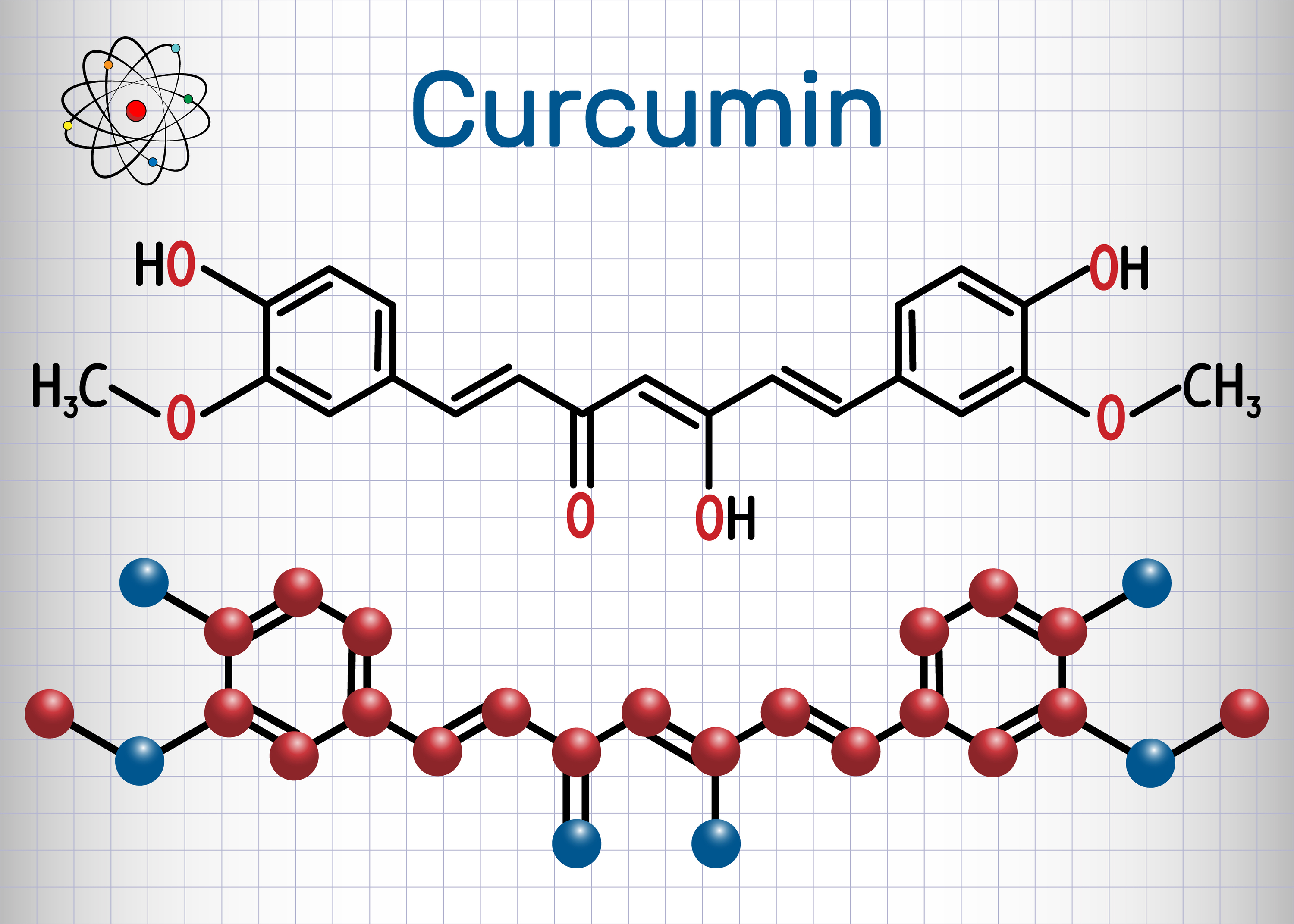
Curcumin , curcuma, curcumine, curry, turmeric, additive, E100, yellow, orange, herbal, supplement, cosmetics, ingredient, spice, color, hydrogen, carbon, oxygen
Curcumin is a polyphenol – a compound found in plants and when consumed has a high antioxidant effect in the body. But what makes curcumin so special?
Health Benefits
As well as being an antioxidant, curcumin has been shown to have many health benefits including anti-inflammatory, anti-microbial, the treatment and prevention of diseases such as cardiovascular, autoimmune, metabolic and numerous cancers.
The metabolic pathways targeted by curcumin, in its effectiveness in treating various conditions, are diverse and complex, however a recent review article from April 2014, summarised some of the key pathways in the prevention and treatment of common diseases.
In the case of cancer, tests in animals and in vitro showed that curcumin targeted cancer cell initiation, growth and proliferation via various pathways e.g. stopping tumour cell cycle by modulating cyclin D1, up-regulating tumour suppressor genes such as p53 which prevent uncontrolled cell growth, and effecting the caspase pathway involved in programmed cell death.
Further studies have revealed that curcumin can also aid in the effectiveness of chemotherapy drugs 5-fluorouracil and 5-fluorouracil plus oxaliplatin by inhibiting the resistance of colon and breast cancer cells to this adjuvant therapy. And in the case of radiotherapy given to breast cancer patients, taking curcumin has been shown to reduce the risk of skin infection after treatment is finished.
For example it has been seen to have a protective effect by up regulating prosurvival proteins to protect heart muscle, and through its antioxidant properties can prevent oxidation of low-density lipoproteins.
As an anti-inflammatory, curcumin when consumed in mice influenced the expression of antioxidant proteins by up-regulating Nrf2 – a key protein associated with anti-oxidant gene expression. By increasing the anti-oxidant expression the mice were able to enhance the targeting of oxidative stress caused by inflammation.
Inflammation is implicated in many diseases including inflammatory bowel disease and arthritis, and studies have shown how curcumin down-regulates production of the inflammatory cytokines known as interleukins.
Patients with rheumatoid arthritis found their condition improved with a dietary supplement of curcumin, in mouse models with Alzheimer’s disease there was a reduction of inflammatory cytokines, and mice models with Crohn’s disease showed an improvement in their condition when curcumin was taken orally.
Bioavailability, absorption and metabolism of curcumin
It is the derivatives of curcumin that studies have shown to be most bioavailable when consumed orally compared to curcumin itself. It has been found that when treating some common diseases in vitro and in vivo (in animals) it is the derivatives of curcumin that have the most potent effect compared to curcumin.
For example, B63 – curcumin analogue, used at half the dose of curcumin had a greater inhibition effect on cancer tumour growth in mice. B06, another curcumin analogue showed greater anti-inflammatory effects than curcumin alone. With regard to its anti-oxidant properties, studies demonstrated that whilst curcumin had a positive effect at low dose of inhibiting protein tangles associated with Alzheimer’s disease, its engineered derivative had the same effect at much lower levels.
The most common method of administration of curcumin or its derivatives is via the oral route either alone or with other agents to enhance efficacy, however topical administration of curcumin was seen to improve healing of skin wounds in patients with cancer. However the most effective delivery systems are being researched in order to optimise the absorption and metabolism of curcumin in vivo.
To date some effective ways to optimise curcumin absorption and metabolism has been to encapsulate it with liposomes or with silica, however the most effective so far has been to incorporate curcumin into a nanoemulsion as it has been seen to deliver 6 times higher serum levels compared to standard curcumin. This is because once in the body curcumin can freely pass cell membranes due to its ability to dissolve in fats, however conversely this makes it more difficult in aqueous solutions allowing for easy degradation. Nanoemulsions protect the curcumin particles in these conditions.
Studies have indicated that between 60-75% of orally administered curcumin is excreted in faeces. Once taken it is shown to be absorbed in the intestine but rapidly (within minutes) broken down into its metabolites and excreted.
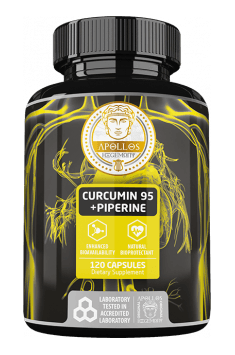
This makes it extremely important to develop effective means of delivery in vivo to ensure as much as possible of the spice or its derivative is utilised by the body.
Current use and clinical trials
Curcumin is used as a supplement in many countries including the United States of American and Japan, but it is most widespread in Asian countries such as Thailand and Pakistan where consumption of turmeric is up to 1.5 g per day.
Clinical trials so far have involved over 1000 patients with focus on prevention and treatment of diseases such as cancer, inflammatory bowel disease and cardiovascular diseases where dose levels have varied between 0.18 – 8.0 g/day. Further trials are underway.
Although studies have shown that curcumin for example is less effective against certain cancers than current chemotherapy methods, the benefits of this spice are that it has multiple targets against cancer pathways as opposed to one in the case of some chemotherapy treatments, and side effects are potentially much less severe or indeed none at all.
As yet curcumin has not been approved for treatment of disease in the UK, and although deemed safe to take orally at low gram levels (e.g. 8-11 g/day), toxicity levels should be determined before any recommendations regarding its use are made. There are no guidelines, as yet in the UK regarding supplementation.
References:
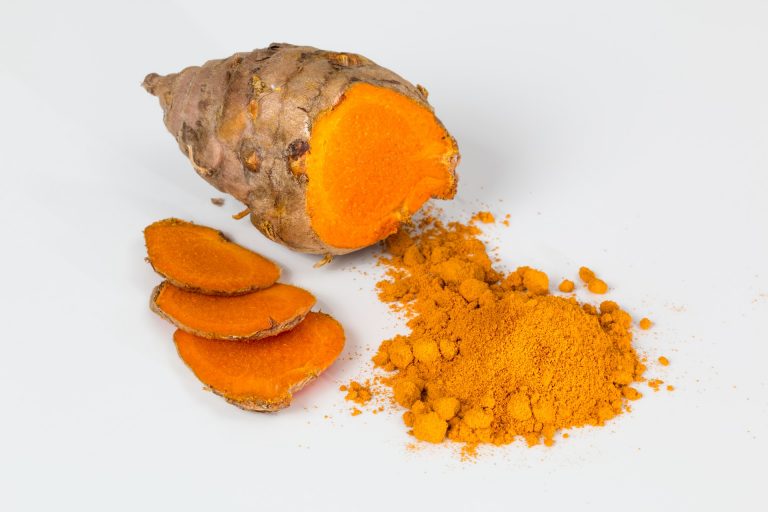
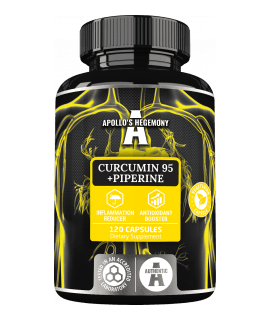
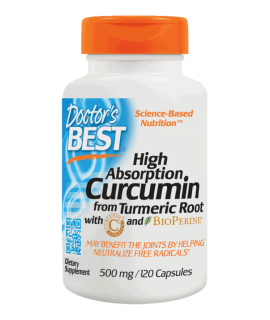

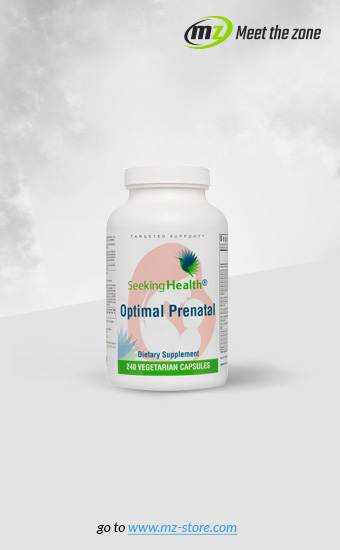
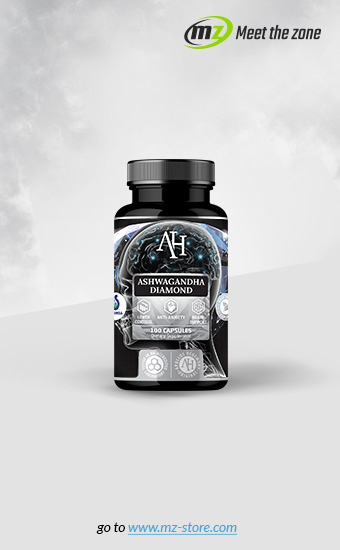
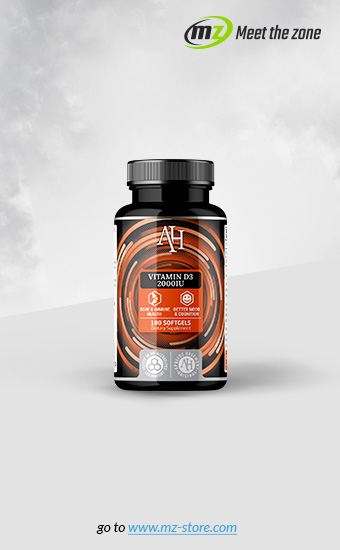
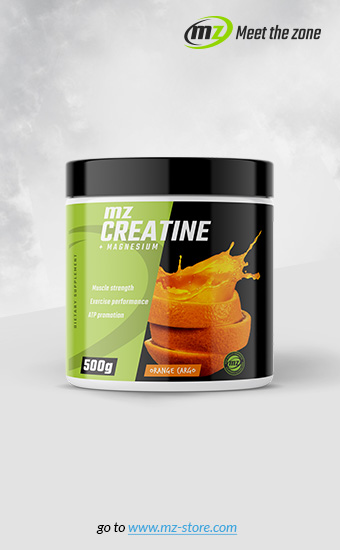
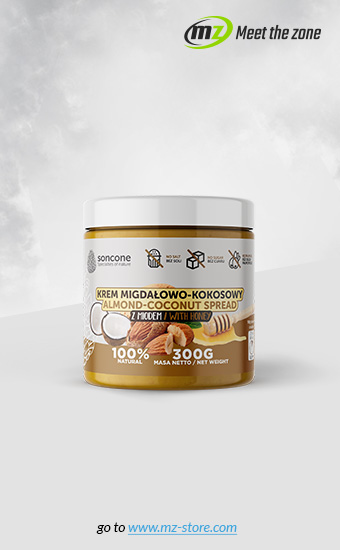

One Comment